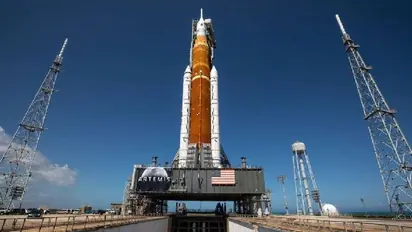NASA’s Artemis 1 Orion spacecraft to splashdown on Dec 11; Here's when and where you can watch live

Synopsis
All good things come to an end, including NASA’s wildly successful Artemis 1 mission to the Moon and back. At least, it’s been successful so far, as Orion must still perform a harrowing reentry through Earth’s atmosphere. Here is when and where you can follow the action live.
As part of the Artemis 1 mission, the Orion spacecraft is still returning to Earth, and NASA scientists are preparing for its splashdown. The Orion will make a splashdown on Guadalupe island, Mexico, in the Pacific on Sunday, December 11, around 12.40 PM ET (11.10 PM IST).
The same event will also be live streamed by the space body. At 11:10 IST on December 11, the live stream will commence. Users may view the live feed on NASA TV, YouTube, and the agency's official app.
In order to continue its splashdown toward the Pacific Ocean before entering the earth's atmosphere again, the crew module will separate from the service module. The service module will burn up in Earth's atmosphere after return. NASA has carefully controlled the Artemis 1 fall to eliminate any risk to people, property, or shipping channels from the spacecraft's remaining parts.
Also Read | SpaceX's first private-funded Moon trip to include Indian actor Dev Joshi, K-pop star & others
Orion's crew module will employ a "skip entry" manoeuvre, a first for a manned spacecraft, to precisely splash down at the landing site after separating from the service module. Orion will first plunge into the upper atmosphere in order to achieve this, using the gas there and the lift from the capsule to "jump" out of the atmosphere. Before making its last, parachute-assisted plummet, it will rejoin the atmosphere.
NASA asserts that this technology will permit a safe descent regardless of when and where next Artemis missions return from the Moon. The spaceship will decelerate to around 523 kilometres per hour upon reentry due to the atmosphere of our planet.
Also Read | Who is John McFall, the physically disabled surgeon in ESA’s class of 2022 astronauts?
At a height of around 8 kilometres, three mini parachutes will commence the parachute deployment procedure by lifting the covers of the front bays. After the cover splits, two drogue parachutes will be released. These will cause the crew module to decelerate and stabilise. These 35-meter nylon parachutes will reduce Orion to a speed of around 32 kilometres per hour for splashdown.
Also Read | NASA's Orion spacecraft clicks stunning images of Moon, Earth; Check out